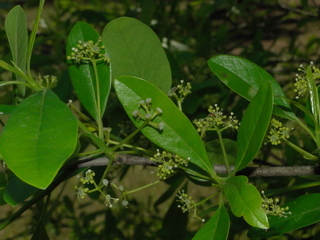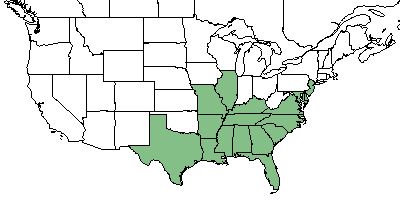Difference between revisions of "Nyssa biflora"
(→Distribution) |
(→Ecology) |
||
| Line 30: | Line 30: | ||
==Ecology== | ==Ecology== | ||
| − | ===Habitat=== <!--Natural communities, human disturbed habitats, topography, hydrology, soils, light, fire regime requirements for removal of competition, etc.--> | + | ===Habitat=== |
| + | |||
| + | <!--Natural communities, human disturbed habitats, topography, hydrology, soils, light, fire regime requirements for removal of competition, etc.--> | ||
<!--===Phenology===--> <!--Timing off flowering, fruiting, seed dispersal, and environmental triggers. Cite PanFlora website if appropriate: http://www.gilnelson.com/PanFlora/ --> | <!--===Phenology===--> <!--Timing off flowering, fruiting, seed dispersal, and environmental triggers. Cite PanFlora website if appropriate: http://www.gilnelson.com/PanFlora/ --> | ||
<!--===Seed dispersal===--> | <!--===Seed dispersal===--> | ||
| Line 36: | Line 38: | ||
<!--===Fire ecology===--> <!--Fire tolerance, fire dependence, adaptive fire responses--> | <!--===Fire ecology===--> <!--Fire tolerance, fire dependence, adaptive fire responses--> | ||
<!--===Pollination===--> | <!--===Pollination===--> | ||
| − | + | ===Use by animals=== | |
| + | The White tail deer utilize the twigs and foliage. Small mammals and birds will eat the fruit. Also, birds and small mammals will make nests and cavities in the tree. The flowers provide nectar for bees. <ref name= "USDA"> [https://plants.usda.gov/core/profile?symbol=CEAM USDA Plant Database]</ref> | ||
| + | <!--Herbivory, granivory, insect hosting, etc.--> | ||
<!--==Diseases and parasites==--> | <!--==Diseases and parasites==--> | ||
Revision as of 15:50, 24 May 2018
| Nyssa biflora | |
|---|---|

| |
| Photo by Bobby Hattaway at the Discover Life Database | |
| Scientific classification | |
| Kingdom: | Plantae |
| Division: | Magnoliophyta - Flowering plants |
| Class: | Magnoliopsida - Dicots |
| Order: | Cornales |
| Family: | Cornaceae |
| Genus: | Nyssa |
| Species: | N. biflora |
| Binomial name | |
| Nyssa biflora Walter | |

| |
| Natural range of Nyssa biflora from USDA NRCS Plants Database. | |
Contents
Taxonomic Notes
Synonym: N. sylvatica (Marshall)
Variety: none
Description
N. biflora is a perennial tree of the Cornaceae family that is native to North America. [1]
Distribution
N. biflora is found throughout the southeastern United States; specifically, Florida, Georgia, Alabama, South Carolina, North Carolina, Virginia, Maryland, Deleware, New Jersey, Tennessee, Kentucky, Mississippi, Louisiana, Texas, Arkansas, Missouri, and Illinois.[1]
Ecology
Habitat
Use by animals
The White tail deer utilize the twigs and foliage. Small mammals and birds will eat the fruit. Also, birds and small mammals will make nests and cavities in the tree. The flowers provide nectar for bees. [1]